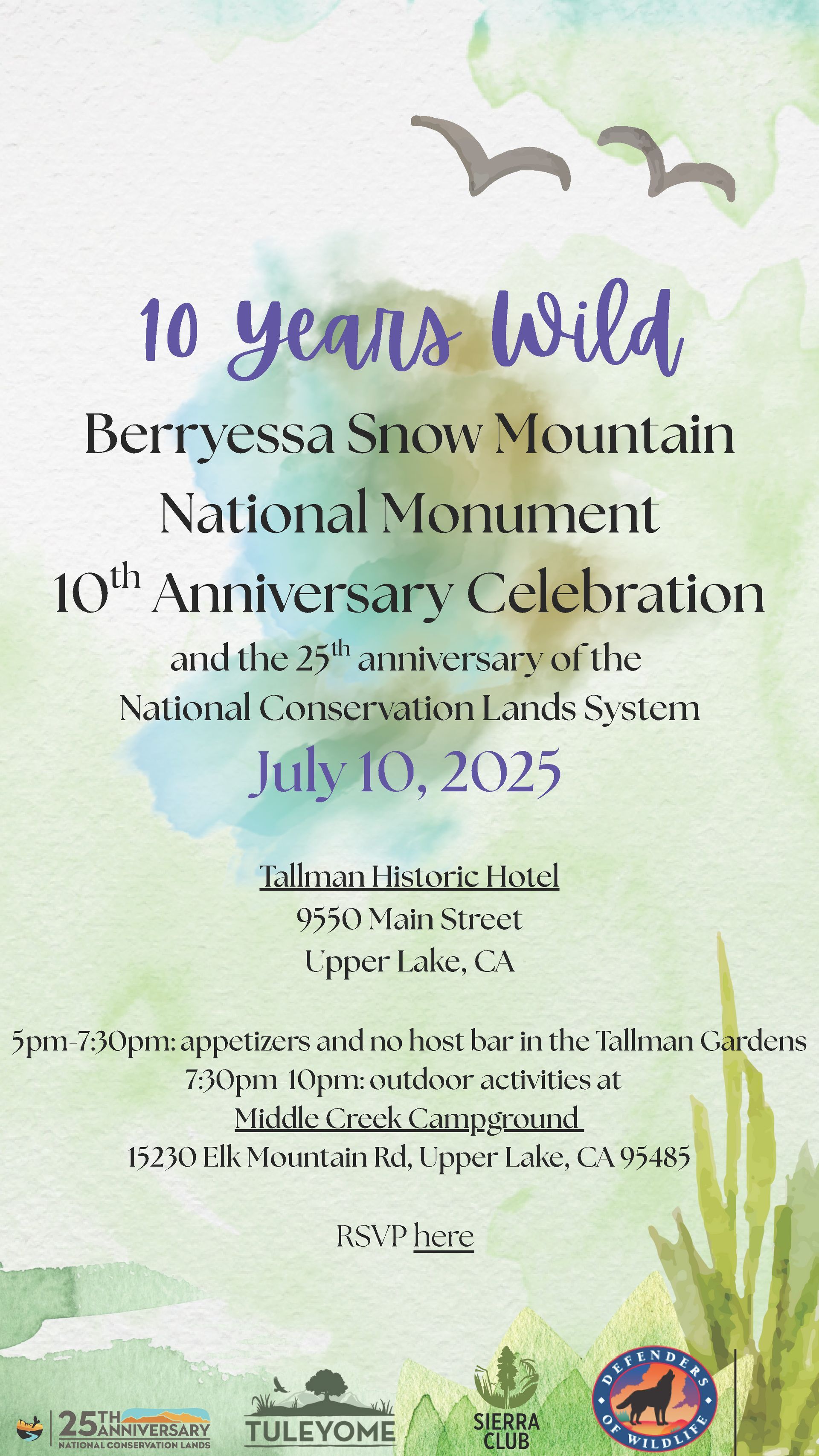Monumental Anniversary (Questions)! - A Short History of the Berryessa Snow Mountain National Monument

As the old saying goes, time flies when you’re having fun! Can you believe it’s already been ten years since President Obama used the Antiquities Act to forever protect that special part of the Inner Coastal Range that we call the Berryessa Snow Mountain National Monument?! If you have been there, you probably understand and appreciate the importance of protecting this special place and if you haven’t been there, there is no time like the present to make the short drive to visit.
The birthplace of the Monument was at the ocean floor beginning 60 to 100 million years ago. Both Snow and Goat Mountains began as Jurassic seamounts that rose from the bottom of the ocean never reaching the surface of the water. The shifting of the North American and Pacific plates first pushed the seamounts back down below the ocean floor before once again pushing them back up, finally becoming the mountains we see today rising into the sky. California’s state rock, serpentinite, is visible throughout the Monument. It is the source of the region’s unique soils that support rare and endemic plant species contributing to extraordinary biodiversity. Due to the remarkable geology, the region’s hydrology is also notable; hosting multiple geothermal, mineral, carbonated and freshwater springs.
The region sustained Native Americans and their culture by providing nuts, seeds, grains and meat as well as shelter and materials used to make tools and assets for trading with other tribes. Traditional burning practices maintained the skillful balance between nature and man. Still evident to the experienced eye are many cultural resources sites within the Monument; mineral gathering, hunting and trading routes, camps and villages all preserved and protected.
Later came explorers, fur trappers, gold miners and ranchers. Shortly after, sawmills and railroads were constructed for timber harvest and around the turn of the 20th century people from all over came to steep in the therapeutic mineral-rich hot spring waters of the region. The native inhabitants of the Monument were displaced by the actions and activities of European settlers in the early to mid 1800’s yet the landscape still retains deep cultural significance for the 24 federally recognized tribes that call the region their indigenous home.
In 2015, President Obama recognized the need to preserve and protect, in perpetuity, this unique location for public welfare and enjoyment. The Berryessa Snow Mountain National Monument (Monument) is the quintessence of California’s wild Inner Coast Range hosting the headwaters of the Eel River, Cache, Putah and Stony Creeks. The region was once under ocean waters where geologic forces shaped and fashioned it into one of the most biologically diverse regions in California - a biological hotspot. The original boundaries established in 2015 included 330,780 acres of unbroken wildlands that sustain wildlife corridors and rare plant habitat. In 2024, President Biden extended the protection by including the 13,696 acres of Molok Luyuk. The Monument is a place sacred and significant to the Native American tribes including the Yuki, Nomlaki, Patwin, Pomo, Huchnom, Wappo and Lake Miwok that make up the very history of the Monument.
Paleontological studies have not only helped date the region but have also shown how tectonic plates have moved. A walk in the Monument is a stroll through millions of years of geological processes that have helped shape California. The dramatic topography is stunning from all angles. From nearly sea level in the valley, rolling hills, steep canyons, breathtaking ridgelines, to the East and West peaks of Snow Mountain that rise to more than 7,000 feet. Because of the diversity of habitat types, the Monument is also home to a variety of special-status wildlife species including Bald Eagles, Northern Spotted Owls and Tule Elk.
All of these combined have contributed to why the Berryessa Snow Mountain National Monument has been called the Crown Jewel of Northern California’s Inner Coast Range!
Please join us on July 10, 2025 at the Tallman Hotel in Upper Lake at 5 pm for a Monumental celebration to commemorate the 10th anniversary of our favorite monument!
We can’t wait to celebrate with you!
-Kristie Ehrhardt (kehrhardt@tuleyome.org)
Tuleyome Land Conservation Program Manager
RECENT ARTICLES






